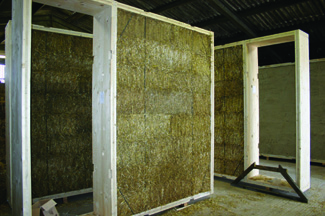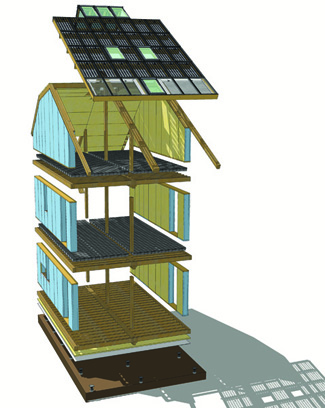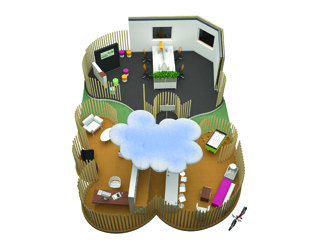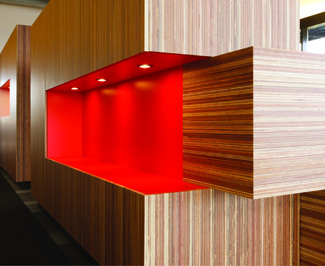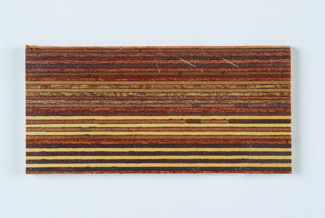Toxins. Volatile Organic Compounds. Off-gassing. Ten years ago, these terms made their way into our mainstream vocabulary. And for good reason.
People were beginning to realize many materials used to build our homes were toxic and caused adverse health effects. Volatile Organic Compounds — or VOCs — in carpets and furniture, evaporate and release harmful toxins into the environment, a process that can happen over a period of years after products are initially installed. Because we spend about 90 percent of our time indoors, exposure to chemicals such as formaldehyde can trigger headaches, allergies, respiratory problems, and damage to nerves, the kidney and liver — to name only a few symptoms.
The Environmental Protection Agency says the biggest VOC offenders are in adhesives and sealants, paints and coatings, carpet systems, composite wood and laminate adhesives, furniture and seating.
Needless to say, more and more people are demanding safer materials for their homes and, although it has taken a while, the building industry is signing on to the “green” trend.
“In the past three years, there’s been a drastic change and green has become more popular,” said Kate Dayton, consultant and owner of Green Courage, a New Paltz-based company that sells environmentally responsible materials and supplies. “People want it — even if they are not chemically sensitive. The whole purpose is to offer customers more healthy options.”
Consumers educating themselves about environmentally safe materials for their homes are on a parallel path with builders, contractors and architects. They’re even slightly ahead. The path means weaning oneself from toxic, oil-based paints because they contain harmful petrochemicals that can be absorbed through the skin and scalp, affecting human organs and tissues.
Water-based latex paint is somewhat safer, although some use as many as 15 percent chemicals that emit solvents after being applied. Mildew-resistant paints can emit toxins because they use fungicides such as arsenic, disulphide, ammonium compounds or formaldehyde.
A green option for both is to use low VOC or “zero VOC emissions” paint, which is odorless and costs about the same as known brands. But the paint industry is also starting to produce less-toxic paints that are sold at most home building stores. It’s a good idea to ask for solvent-free or odor-free paints and to check out the labels.

- Naomi Sachs, a landscape architect who lives in Beacon, renovated her house with recycled items. (Karl Rabe/Living)
If you’re considering wallpaper instead of paint, you might want to re-think it. Wallpaper is coated with PVC, commonly known as vinyl, and is composed of poisonous chemicals that emit gases, causing major health risks, including cancer and birth defects. Because of the toxic adhesive backing, wallpaper also emits VOCs. But, as with the low VOC paints, there are wallpapers that use low VOC and non-toxic glues.
However, another problem with wallpaper is that because vinyl isn’t porous, it traps moisture underneath the surface — a ripe environment for dangerous mold in humid climates.
And what about floors? The favorite low terrain of babies, kids and pets can also send out a batch of harmful chemicals. Carpeting uses many materials from petroleum-based sources that emit VOCs used in the padding, backing and in the carpet itself. Carpet also harbors all sorts of dirt, dust, pollen and other allergens that are hard to remove and contribute to poor air quality.
There are some greener carpets made from recycled materials such as jute backing, instead of PVC, or recycled Polyethylene terephthalate bottles.
In fact, many carpet manufacturers have “take-back” programs in which they recycle your old carpet with different types of non-chemically treated fibers. HealthyStuff.org, a nonprofit group that reports on toxic chemicals and government regulations, found many residential floors contain heavy metals, chemicals and other additives such as lead, cadmium, flame retardants, tin compounds and phthalates. The harmful chemicals are linked to asthma, reproductive problems, developmental and learning disabilities, hormone problems and cancer. Floor products that don’t contain dangerous substances are cork, bamboo, hardwood and linoleum.
“Some people think linoleum is vinyl, and that’s not true,” said Gina Porcelli, an interior designer based in Rosendale. Porcelli teaches college-level courses focusing on green materials and energy usages.
“Linoleum was the original flooring in the 1940s and was installed in New York City subway cars. Today it is a completely green product, and it’s making a comeback.”
For homeowners wanting to install wood floors, Porcelli suggests they check out flooring certified by the Forest Stewardship Council for wood that comes from a forest maintained for sustainability. The council is one of many certification programs that have surfaced to provide environmental information on products sought by home owners.
Architect Rick Alfandre says wood for flooring or for cabinetry should not only be council-certified but be environmentally harvested.
“There is a certification for healthy indoor air products, particularly for wood products,” said Alfandre, owner of Alfandre Architecture, P.C. in New Paltz. “You want to know where the material comes from and you can ask cabinet suppliers what their process is regarding healthy indoor cabinets.”
Alfandre, who has been in the construction industry for 30 years, says if you are in the market for “green” cabinets, stick to solid wood and plywood rather than particle board, which uses harmful chemicals in the glue.
Wood with urea formaldehyde is particularly dangerous because it is an unstable chemical that emits gasses for a long time. Cheap to manufacturer and colorless, urea formaldehyde is used in many building materials, such as the popular wood particleboard otherwise known as MDF, or medium-density fiberboard. Emissions can cause headaches and respiratory ailments.
In 1998, the U.S. Green Building Council, a nonprofit trade organization, was formed specifically to promote sustainably designed buildings. The council is known for developing the Leadership in Energy and Environmental Design, a green building rating system that fosters a holistic approach, from how building materials are made to how they are disposed of.
“It’s called the ‘cradle-to-cradle’ theory,” said Richard Miller, a New Paltz-based architect. “It’s what happens to the product all the way through its life, especially how we dispose of them and put them back into the environment. Many of the dangerous chemicals in building materials go right into the groundwater, water you are drinking.”
Miller is big on re-using materials that might otherwise be dumped into the landfill.
“We have made counters out of former bowling alleys and sometimes use old barn siding. We also buy wood from local mills or use trees that are on the homeowner’s property.”
Naomi Sachs, a landscape architect who lives in Beacon, renovated her house with recycled items, including a used stove and bathtub from Hudson Valley Materials Exchange.
We tried recycled lumber from a building that was being demolished and for the inside we used low or no VOC paint,” she said.
Sachs decided to spring for a long, 14-foot stainless steel countertop because “it’s durable, not like a vinyl counter and it will last forever. If we ever decide to change it, it is recyclable.”
Sachs describes her renovation as an “adoptive reuse,” and praises the building industry for becoming environmentally conscious.
“It’s healthier not only for us to use products with little or no off-gassing, but think about the people who have to work with this stuff to begin with,” Sachs said.
Using less toxic materials in our homes requires a certain vigilance. Porcelli said there is a lot of “green washing” from manufacturers wanting to sell a product that might not be truly safe, but who are misrepresenting the product’s true nature. She suggests people read labels and not be afraid to ask if the product is recycled or how and where it was made.
“If it’s made in a place as far away as China, you may want to think twice about the amount of fossil fuels that were used to get the product to you,” she said.
Identifying a safe product can be tricky not only for consumers but for architects and contractors in the field, Alfandre said. “You (the manufacturer) can slap a green picture of a leaf, call it green, and it won’t mean anything.”
The real problem is that, to date, there are no national standards or legislation that forces companies to use safe materials. President Barack Obama signed the Federal Buildings Personnel Training Act requiring federal building managers and contractors to participate in green building training so they can better manage sustainable government building
In 2010, two bills were introduced in Congress aimed at improving the safety of toxic chemicals and reforming the 34-year-old Toxic Substances Control Act. Under the current act, the EPA can only test for chemicals that have been shown to have health risks.
The Toxic Chemicals Safety Act in the House and the Safe Chemicals Act in the Senate would give the EPA the teeth it needs to require safety testing of all industrial chemicals and force businesses to prove chemicals are safe before using them. The bills are scheduled to be re-introduced this year.
“We want the onus to be put on the government to ban more chemicals used by manufacturers,” Dayton said. “That will take some strong policies. Now, there is no system in place to require testing for safety. These bills will change the industry. Builders don’t have to worry about the safe, conventional materials they are choosing and can be confident about the materials’ quality and integrity.”
Abby Luby is a freelance writer in the Hudson Valley. She can be contacted atabbylu@abbylu.com
Source: PoughkeepsieJournal.com


















